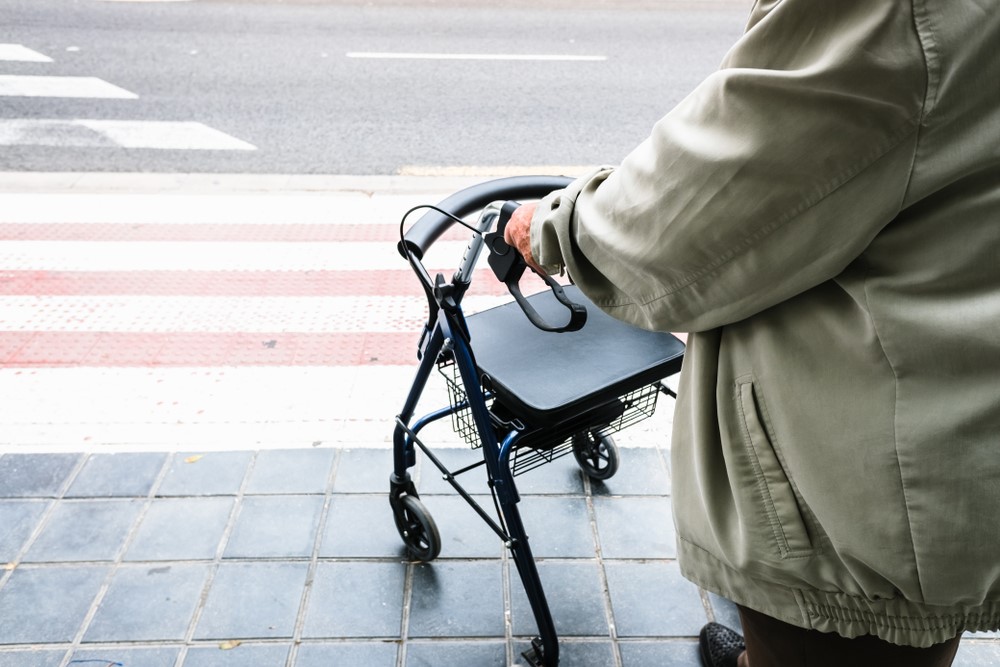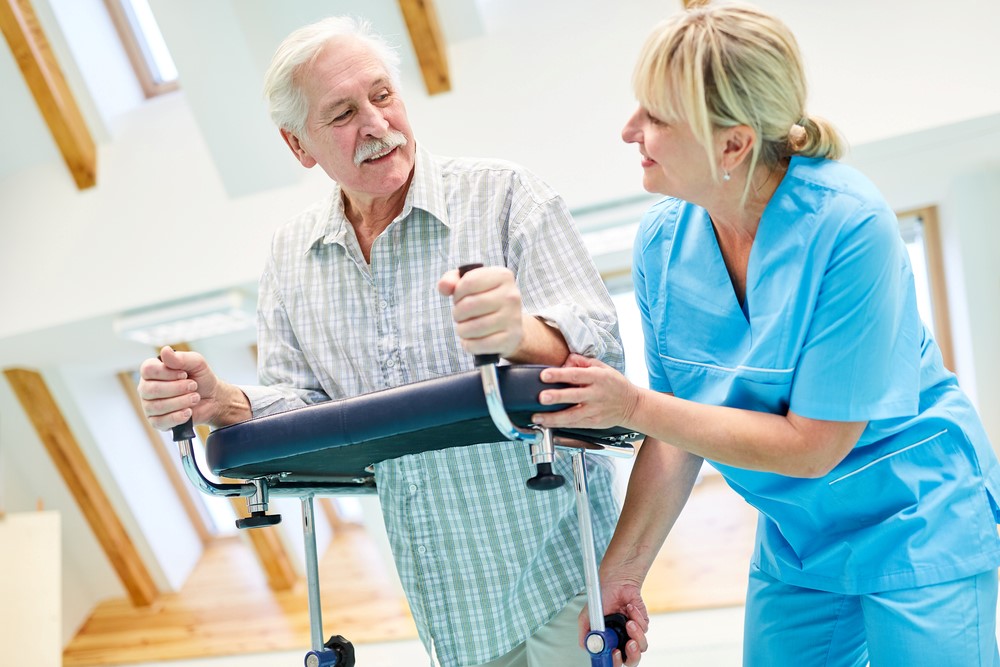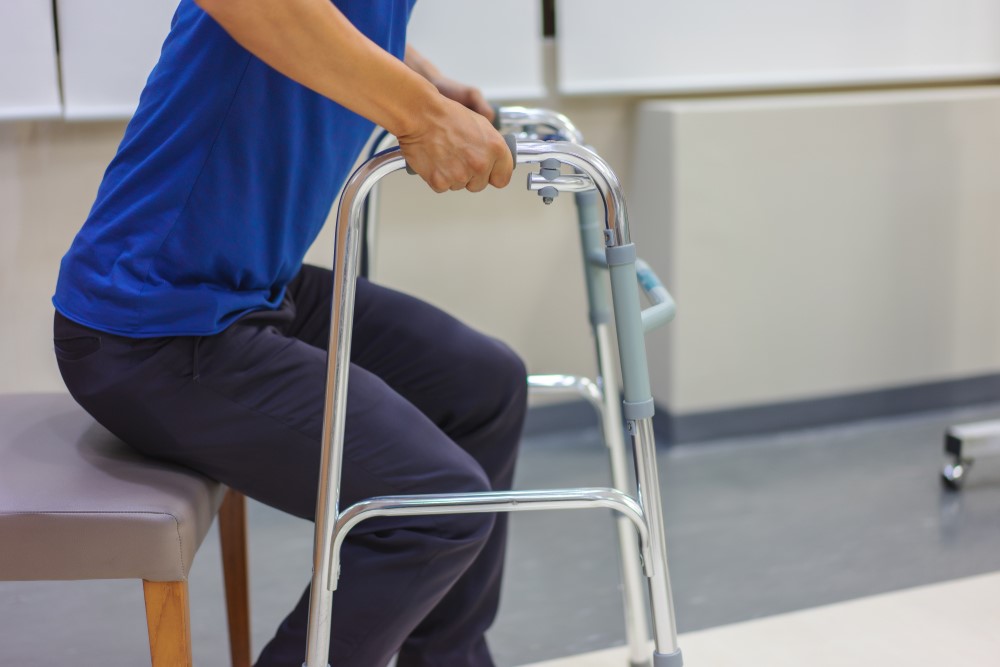
Being able to get around with ease is a feature of life that we often take for granted, until we lose it. This is an area that’s incredibly important for seniors, as many start to find walking difficult.
That’s why today, we’re talking about some of the best walkers for seniors, including a focus on forearm support walkers. The forearm style is somewhat uncommon, so such walkers are easily overlooked. That’s a shame, as this type of walker has some design advantages.
Walkers are powerful, as they make it much easier for seniors to get around, while also improving their safety. Plus, with so many types to choose from, it isn’t too hard to find a walker to match most needs.
Why Do Some Seniors Struggle to Walk?
While some people can walk without a problem for their entire life, many seniors find that they need extra assistance as they age.
One reason is that age comes with a natural loss of muscle mass. This makes coordination and balance more difficult, often leading to seniors being more unsteady on their feet. Conditions, such as arthritis, or the months following a knee surgery can make it challenges to take firm steps.
Becoming unsteady on your feet can make seniors more reluctant to walk, leading some to take walk shorter distances or rarely go out. Avoiding activity can make things worse, as the senior is no longer regularly exercising their leg muscles.
Unsteadiness also increases the risk of falls – and even falling once can be enough to make seniors less willing to walk regularly. It can be a vicious cycle.
How Walkers Can Help
There are a few things that seniors can do to maintain their mobility.
One is to get enough protein (perhaps from protein shakes), as protein is essential in muscle development and can reduce age-related muscle loss.
Getting enough nutrients is important too, as nutritional deficiencies can sometimes lead to problems with walking.
Another approach is to get more exercise. This includes resistance exercise and simply walking further and more often.
Walkers really come into their own here, as they help to keep seniors stable and provide support. They can reduce the risk of the senior falling. Some types even have a seat, allowing the senior to regularly take breaks and recover their strength.
Types of Walkers for Seniors
To fully take advantage of walkers, it’s important to choose one that matches the senior’s needs. To do so, we need to talk about the various types of that are out there and how they differ.
Forearm Support Walkers

Forearm support walkers do what the name suggests – they provide support for the senior’s forearms while they are walking. There are various styles, including two-wheel and four-wheel versions. Many are lightweight, making them easy to transport.
These walkers are powerful because the forearm support encourages seniors to stand upright, improving their posture and reducing joint strain. Seniors may even be able to use the walker for much longer than one that follows a regular design.
The walkers are particularly relevant for anyone with balance issues, helping to keep them steady on their feet.
Plus, many such walkers are adjustable. This makes it easy to get exactly the right height, grip placement, and angles for the senior’s needs.
Standard Walker
This is the least expensive type of walker and typically just has a basic frame with four rubber-tipped legs. It is designed so that the walker won’t skid, even when a senior places their full weight on it.
This is a useful feature, allowing seniors to lean on the walker for support. Walkers with wheels generally offer less support for leaning and may skid away in some situations.
With a traditional walker, seniors must pick it up and move it with each step. Doing so generally isn’t difficult, as the walker is light. However, seniors with severely limited grip or strength may not be able to safely lift and replace the walker. This is something to test before purchasing a walker.
Two-Wheel Walker

This walker follows a similar style as the previous one, except there are two small wheels. Seniors can either lift the entire walker to move it or just lift the two non-wheeled legs. You can find forearm versions of this type of walker, along with the more common design.
The two-wheel style is helpful for seniors who only sometimes need weight bearing support.
This style also ends up being relatively light and inexpensive, making it a fantastic starting point for seniors.
Three-Wheeled Walkers
This style is somewhat unusual and looks a little like a bike. Most have two wheels at the back and one at the front. They also go by the name rollator (as do the four-wheeled versions).
Many also have a basket, making it easy for seniors to carry things with them. Such walkers are perfect for shopping.
Because of the wheels, seniors can’t lean on this type of walker in the same way as the previous examples. However, most versions have brakes, which helps matters.
Still, it’s worth experimenting with this type of walker before purchasing one. Does the senior have the strength and coordination to move it over rough surfaces? What about the brakes? Do they have enough strength in their hands to use the brakes well?
Four-Wheeled Walkers

You’ve probably seen this style before. Walkers like these have four wheels and tend to be fairly solid.
Most have brakes and a basket as well. Some versions even have a seat, complete with backrest. The seat is incredibly useful for seniors who need to periodically rest. The style is particularly powerful if the senior is out for an hour or more and there are no easy places to sit.
The main problem is the size of these walkers. They’re somewhat bulky, so they’re much harder to get into a car than the standard or two-wheeled walkers.
Knee Walker
This is another unusual style. They’re mostly designed for people with an injury, like a sprained ankle or a diabetic wound.
The walker allows the senior to rest one leg, while using the other to help keep them mobile. The tool is essentially an alternative to crutches and will often be prescribed following an injury.
Some versions have just two wheels, but you can find three- and four-wheeled versions as well.
Other Things to Consider
There are other important things to think about when choosing a walker.
The Weight Limit
Most walkers will have a recommended weight limit. This means they work well for users of up to a particular weight, but not beyond that.
The weight limit is particularly important for seniors who are leaning on their walker, even a little. Using a walker when you’re above the weight limit is likely to cause extra wear and tear, reducing how long it lasts.
There’s even a risk that the walker breaks entirely, causing serious injury.
Weight limits are often somewhere between 250 lbs. to 300 lbs. However, you can find bariatric walkers too. These tend to be more expensive, but some can support as much as 650 pounds.
The Size
How big is the walker?
You’ll need it to be small enough to easily fit through doorways at your house and wherever else it needs to go. However, it also needs to be wide enough to meet the senior’s needs.
The width is particularly important for walkers with a seat – as the senior needs to be able to sit comfortably without getting stuck.
The dimensions are something to seriously consider before buying the walker. You certainly don’t’ want to invest in a new walker, just to find that it is constantly frustrating and never fits where it needs to.
Is It Portable?
What about when the walker isn’t being used? Some walkers can be easily folded up and put in the trunk of a car or off to the side somewhere. Other types are more frustrating.
As a general rule, lightweight walkers are easily folded and are great portable options, while other walkers tend to be more stable and resilient, but are less portable. Some seniors might even need two different types of walkers, so they have something that works for any situation.
What About The Price?

Walkers vary dramatically in price, with the standard and two-wheel versions often being the cheapest. You need to pay a little more to get a walker that’s more resilient and has extra features.
Thankfully, there are often payment plans for expensive walkers. This makes them much more realistic.
Medicare Part B also covers walkers, viewing them as a type of durable medical equipment. The level of coverage varies and the walker must be considered a medical necessity. Still, the idea is worth checking out to see whether it could apply to your situation.
Final Thoughts
Some seniors don’t like the idea of walkers and rollators, fearing that they signal a loss of independence. Yet, the opposite is true. Using a walker regularly is a fantastic way for seniors to stay active.
Not only do they get the chance to be outside and spend time in nature, but they’re also strengthening their leg muscles and keeping their body in shape.
All the walkers we’ve featured on this list work well. The best type will depend on the senior’s needs. Don’t forget about the forearm support walkers either. This style can be a little harder to find than the other types on this list, but the benefits for posture and joint pain are amazing.
Feeling Overwhelmed?
Check out our Caregiving Consulting service for personalized support and guidance.


Leave a Reply